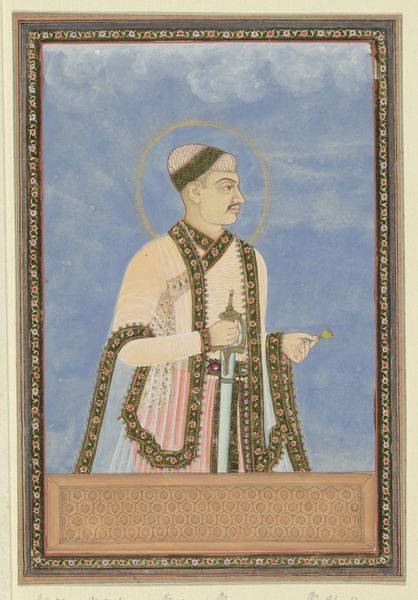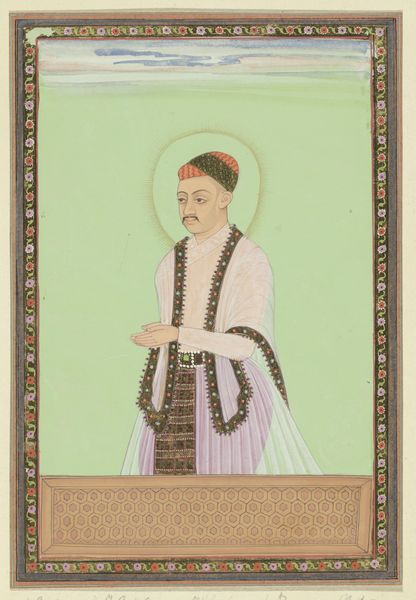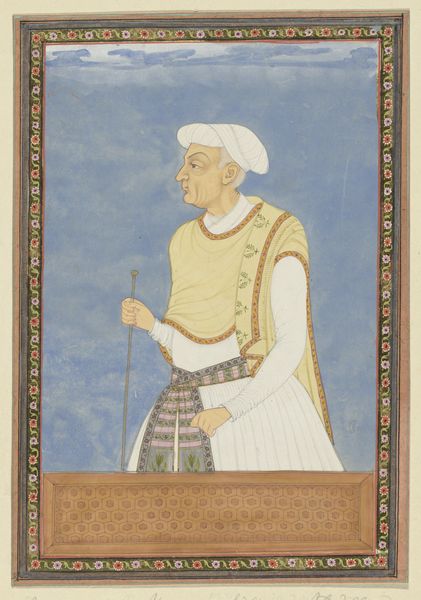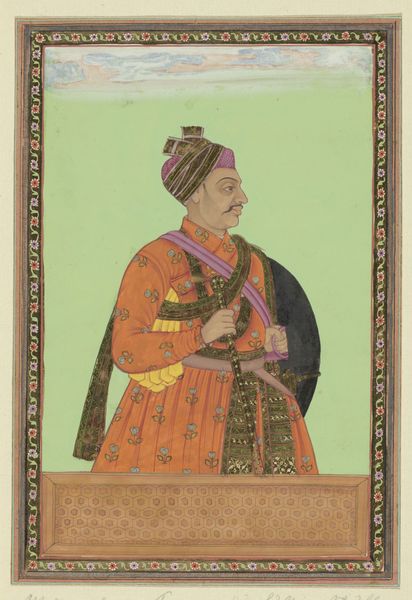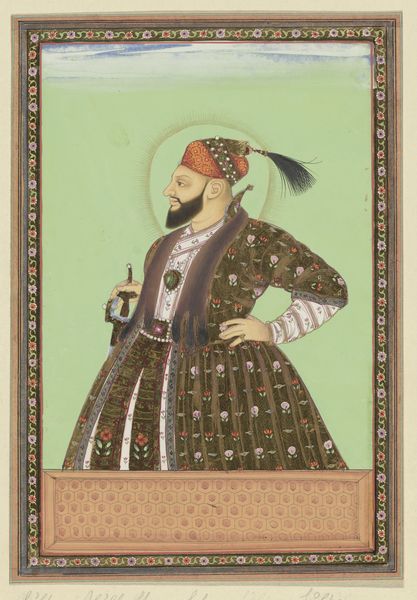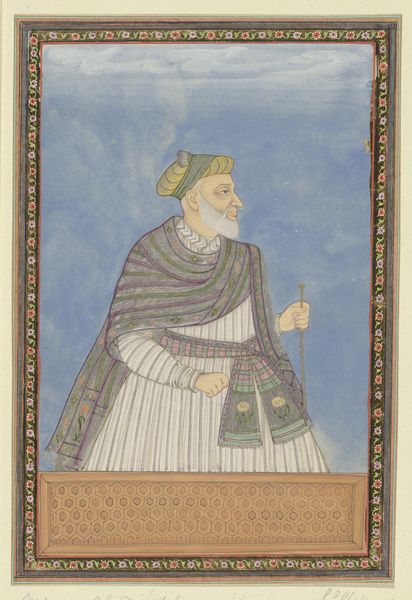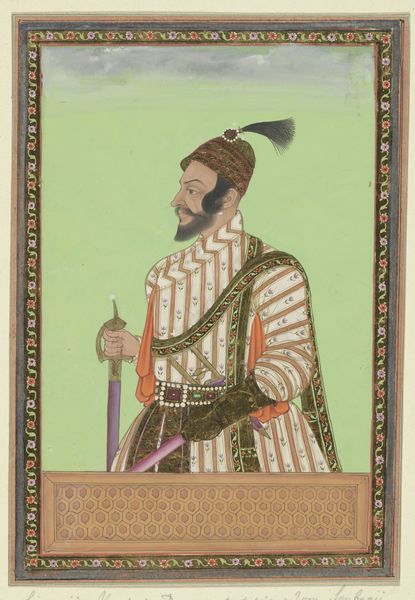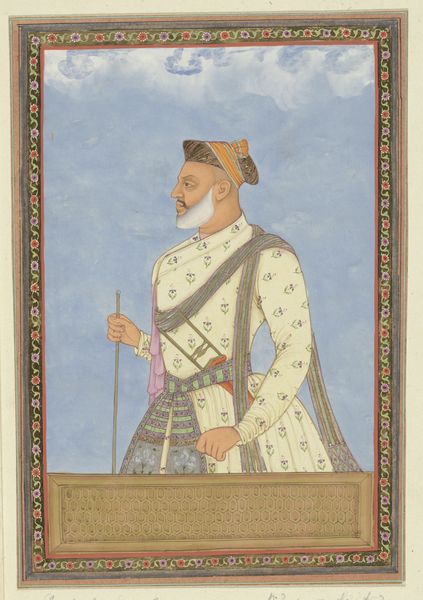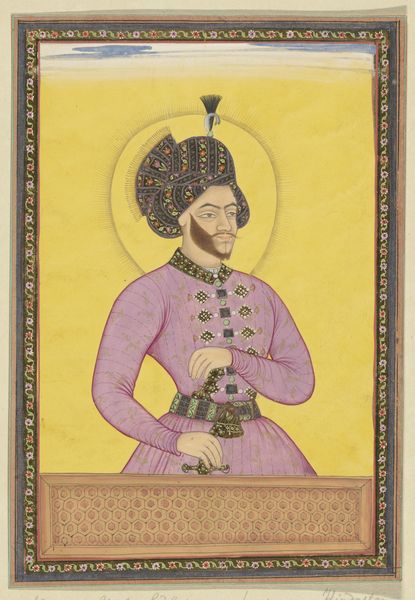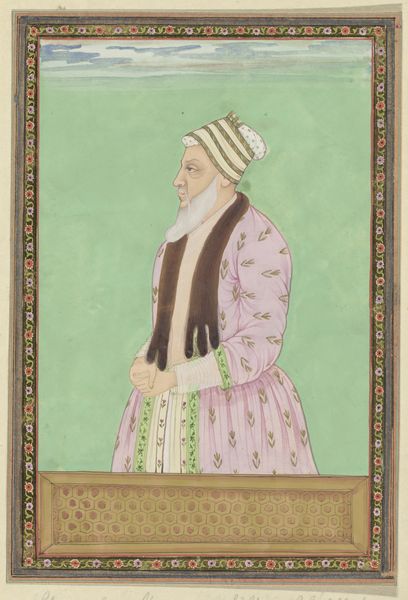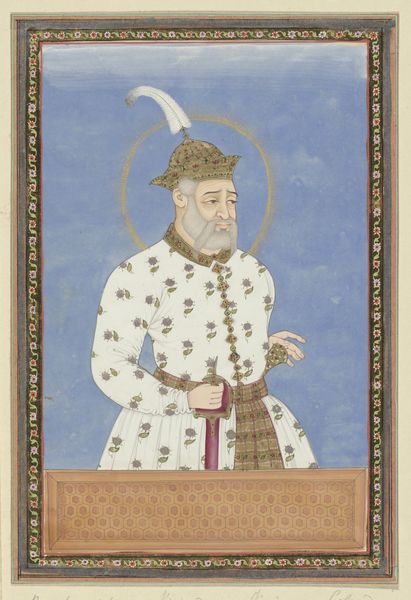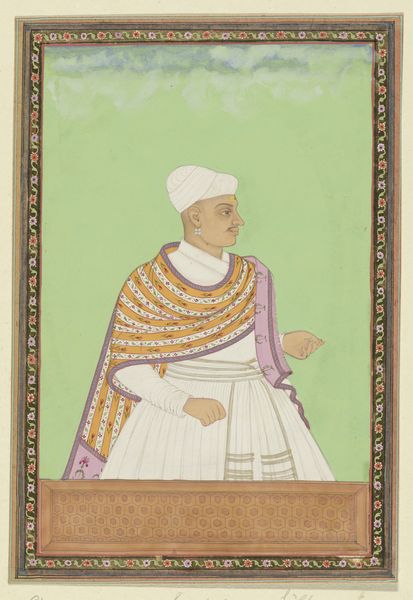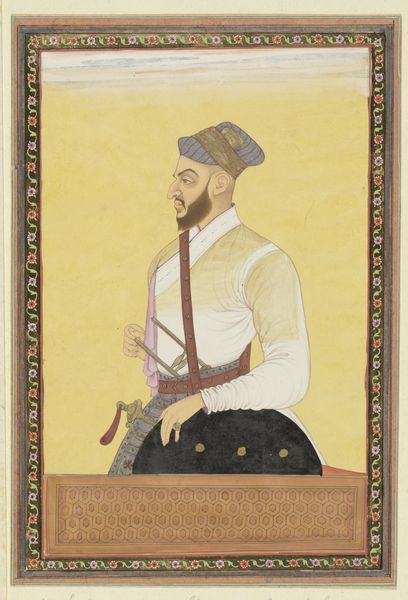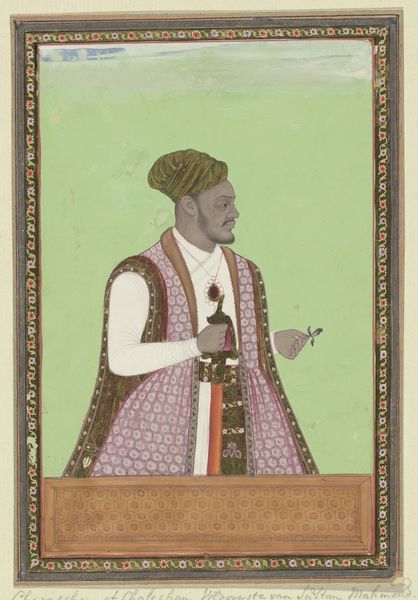
Portret van Sultan Muhammad-Quli, zoon van Muhammad-Quli Padsha; na zijn vader heeft hij over Golconda geregeerd c. 1686
0:00
0:00
painting, watercolor
#
portrait
#
water colours
#
painting
#
asian-art
#
watercolor
#
islamic-art
Dimensions: height 203 mm, width 140 mm
Copyright: Rijks Museum: Open Domain
Editor: So, this is a watercolor painting titled "Portret van Sultan Muhammad-Quli, zoon van Muhammad-Quli Padsha," dating back to about 1686. It’s from the Rijksmuseum, and the artist is anonymous. It strikes me as quite regal and formal, especially the way he’s presented with what appears to be a halo. What’s your take on this portrait? Curator: The very act of commissioning and preserving this portrait, especially within an Islamic artistic tradition, suggests a deliberate attempt to construct and project an image of authority and legitimacy. This becomes especially pertinent given that the Sultan ruled Golconda after his father. How does the painter signal Golconda’s place in global politics? Editor: I notice a halo behind him. Curator: Yes. That's visually intriguing, isn't it? The halo, often associated with divine figures in other cultures, being employed here tells us something about how the Sultan intended to be perceived, or how his court wished him to be seen. This halo subtly asserts his power and almost sanctifies his rule, while connecting him, whether deliberately or not, to global political and religious images. What might it mean for this Sultan to commission this work, in this visual style, for his legacy? Editor: That's fascinating. I hadn't considered the political implications of something like the halo. It makes you think about who this image was intended for and what kind of message they were trying to convey. Curator: Exactly! The portrait isn't just about representation; it's about actively shaping perception and cementing a ruler's place within the socio-political landscape. The choice of materials – watercolor – would also influence our interpretation, its relative ease allowing its movement throughout various global artistic and political networks. Considering the Sultan's political life, do you feel the artist was successful? Editor: Definitely. I see how visual art and cultural artifacts can be powerful tools for communicating and even manipulating ideas. It's more than just aesthetics. Curator: Precisely. Art serves as a powerful medium through which societal, cultural, and historical narratives are constructed and negotiated. So what started off as a pretty image has all of a sudden opened up into quite a few stories about trade, legitimacy, and more!
Comments
No comments
Be the first to comment and join the conversation on the ultimate creative platform.
